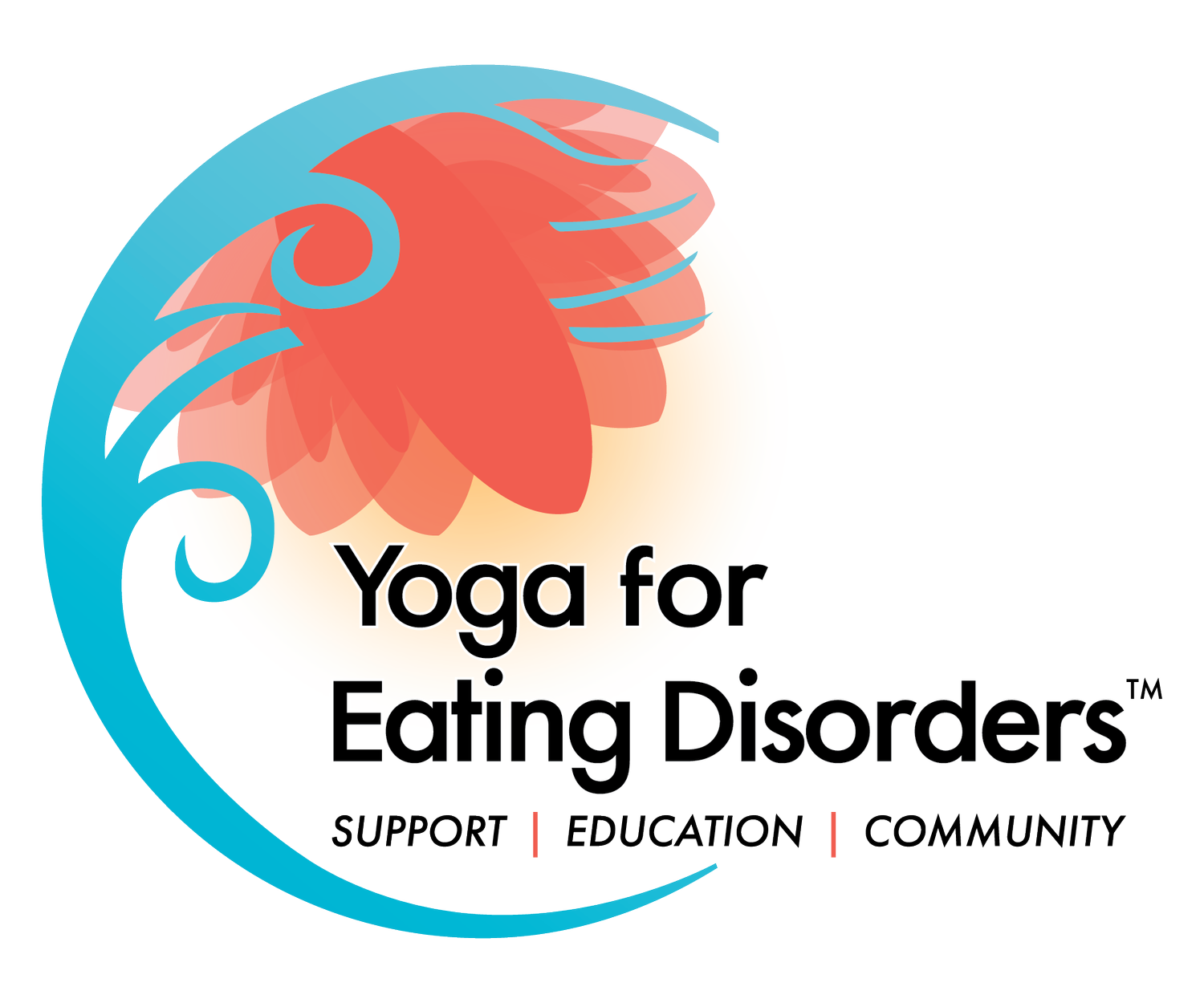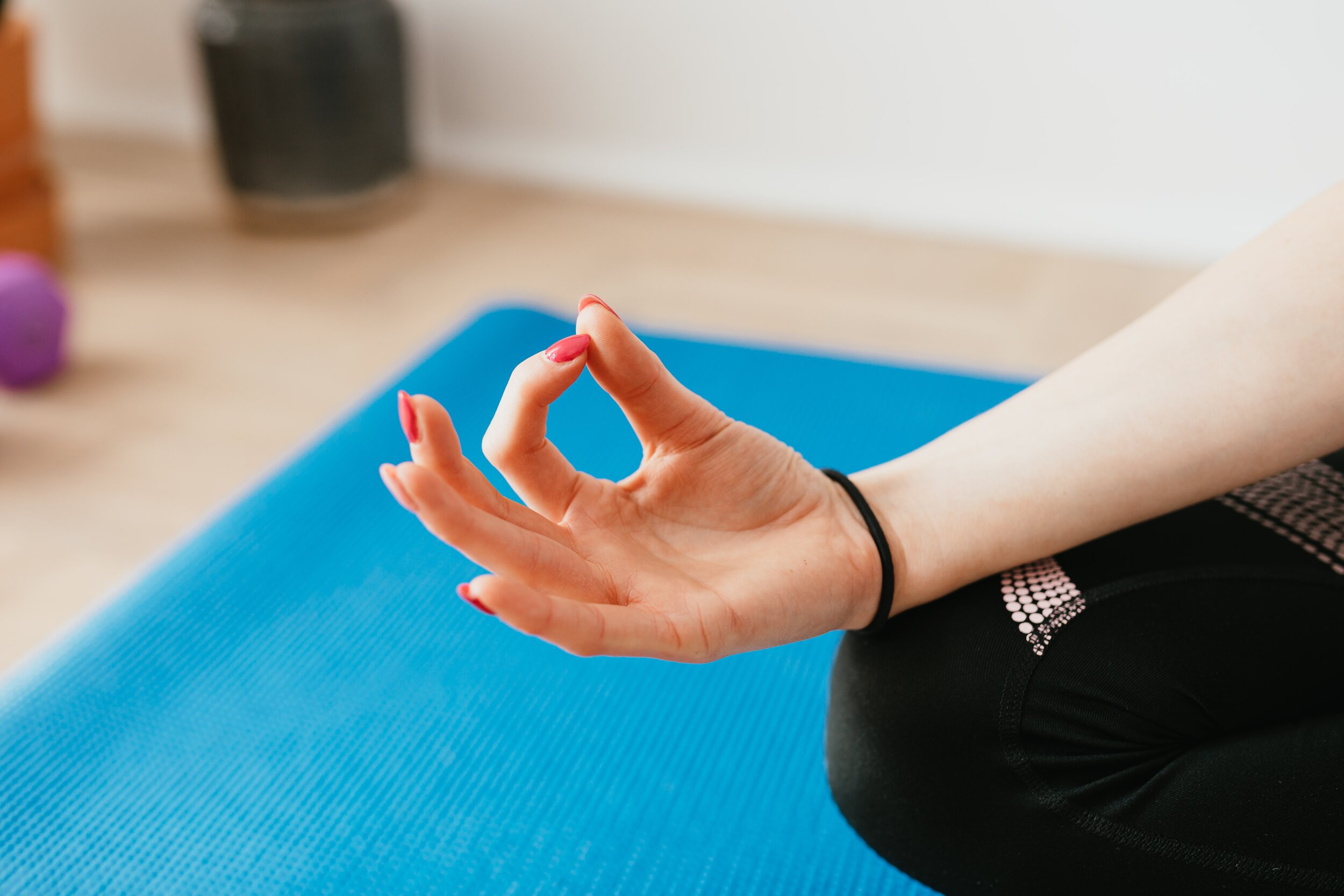Living Yoga in My Recovery
By Maz Connolly, Guest Contributor
Like many yogis, I love yoga. I love how it makes me feel, how it allows me to connect with everything and everyone around me, but mostly I love how yoga completely changed my life and has helped hugely in my recovery from anorexia.
Unlike many contemporary yogis, my yoga journey didn’t begin with the physical practice of asana. In fact, as someone who was obsessed with exercise, I didn’t consider yoga to be anything I’d ever be interested in, but that changed when my therapist lent me a book about the chakras. Suddenly, I began to understand myself in a way I’d never been able to before.
As my interest grew, I began to incorporate more mindfulness into my daily life which allowed me to develop more self-awareness and the more aware I became of my thinking patterns the more I realised just how much harm I was doing to myself, not just physically through self-harm and the anorexic behaviours but also emotionally because of how I thought about myself. A conversation with my therapist about that, led to my introduction to the yamas and niyamas, a guide on how to treat ourselves and others, and suddenly my recovery journey took a huge leap forward.
From the moment I read about the concept of Ahimsa, the first Yama which teaches us non-harm, I was hooked. I immediately began to question the damage I had been doing to my body, physically, for so many years; reflecting on how starving myself, excessively exercising and cutting myself when I thought I’d “failed” and eaten too much were extreme acts of violence against myself. However, it went further than that because my eating disorder also meant that for many years, I’d also been hurting my friends and family too by causing them unnecessary worry and stress. I had never stopped to think about that before. I’d never had a reason that felt significant enough to want to recover and yet suddenly the idea of not harming anyone, including myself, sparked a fire within me and gave me the willpower and determination to actively work towards recovery. I realised I wanted to bring some peace into my life and into the lives of all the people that loved and cared about me.
Of course, making that decision didn’t mean that taking the steps necessary to recover were ever easy, multiple times each and every day I had to consciously direct my energy to keep me on the right path, to challenge my thoughts and question my intentions, always trying to be truthful with myself so that I was avoiding hurting anyone. Not causing pain to the people I cared about was initially what motivated my recovery, but practicing ahimsa also allowed me to develop compassion and respect for myself and helped me realise I deserved to treat myself as well as I treated everyone else in my life. I began to believe I was worth taking care of.
It was several months after my initial introduction to yoga before I came to a mat. By the time I did I had reached a place where, rather than wanting to exercise to punish or create a ‘perfect’ body, I approached the practice of asana from a place of compassion, curiosity, and acceptance. The yoga Sutra’s describe how the physical postures in yoga should create a feeling of calm and peace rather than pain or discomfort and in order to achieve that I had to stay attuned and connected to my body, I had to begin noticing when I was uncomfortable and learn how to get comfortable with that.
After years of not listening to what my body needed, that wasn’t easy and practicing ahimsa alone wasn’t always enough to overcome my discomfort, which is why the niyama Santosha, which encourages acceptance, became just as important to me as the practice of Ahimsa. In her book True Yoga, Jennie Lee says “Ahimsa encompasses complete self-acceptance at a very deep level” and from my experience this is 100% true. Accepting how my body is feeling every time I step onto my mat, acknowledging my limits without judgement and letting go of the need to strive allows me to practice Ahimsa and look after my body whenever I undertake my asana practice. My mantra each time I get on my mat is “If I don’t strive, I allow myself to arrive.” By not pushing myself to my limits, I can enjoy the experience so much more.
The more I practiced Ahimsa in my life, the easier I found it to direct my energy towards recovery and as a consequence I found myself becoming more accepting towards my body. I stopped striving to look a particular way or to be a certain weight and instead used the same determination that I had used against myself for so long, to work on becoming more content with myself. The more I was able to do that; to open myself up to the practice of Santosha, the more that acceptance and contentment extended into other areas of my life.
To adopt Santosha fully into my daily life, I had to learn to let go of expectations and trust that everything happens for a reason. With acceptance and trust I was able to look at the ‘bigger picture’ and appreciate how I am just a small speck in the grand universe. That lesson has enabled me to practice non-attachment. It has allowed me to stop striving and seeking, instead just being patient and observing life through the lens of curiosity. Santosha has helped me appreciate everything I have in my life and where I am, even when times are difficult, I trust that I am exactly where I am supposed to be. I have stopped complaining about what I don’t have and instead now practice gratitude for those things I do. By letting go, I have found more happiness and peace in my life.
On the mat, my practice of Santosha; simply accepting how my body is feeling and what it can do, means that I am also practicing Ahimsa. Santosha has taught me to not think a posture has to look a certain way; to let go of comparison and just accept “good enough”, as long as good enough is safe. It has taught me to notice how my asana practice has developed, how my strength and flexibility have improved and to let go of any self-judgement or self-criticism. It has also helped me to become more accepting of what my body can and can’t do and how that changes on a daily basis. Today, instead of being frustrated when I am tired or parts of my body hurt, I appreciate the time I have to rest. I am learning to accept my physical limitations and listening to what my body needs, which means that for me Ahimsa and Santosha go hand in hand together. Practicing Santosha alongside Ahimsa means I am not causing myself any suffering, emotional or physical; instead, I am treating myself with the same kindness and compassion I show every other person in this world.
My journey towards recovery hasn’t been quick or easy, but it is certainly worthwhile. Like everything worth doing it has taken practice and dedication and there are continual ebbs and flows that I have to navigate. Yoga, all of yoga – not just the physical practice – has become a way of life for me, it is a part of who I am. It has defined my relationship with myself, the people I love and the whole world around me. It has helped me find a sense of peace and contentment I never knew existed and by continuing to practice I believe I will have the opportunity to become the person I was always meant to become and to share the gift of yoga with others, like the universe always intended me to do.
Maz Connolly is an integrative therapist, hypnotherapist, and yoga teacher (RYT-200) based in Chesham, U.K. She is passionate about sharing her own recovery experience and the tools that have helped her on that journey; including yoga, live action role playing and musical theatre, as a way to inspire others and offer hope that full recovery from an eating disorder is possible. Maz shares her honest and encouraging voice on the Yoga for Eating Disorders Community Facebook group, assisting Jennifer in creating a supportive and empowering space for those affected by eating disorders.


